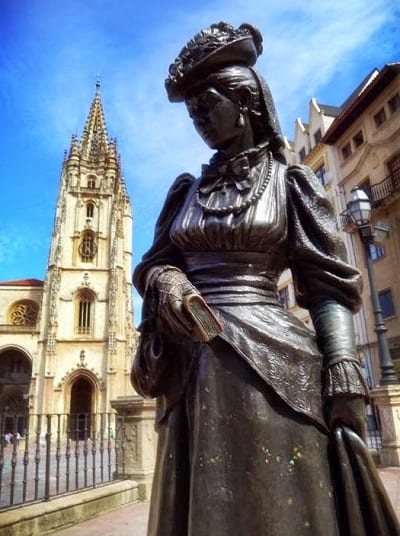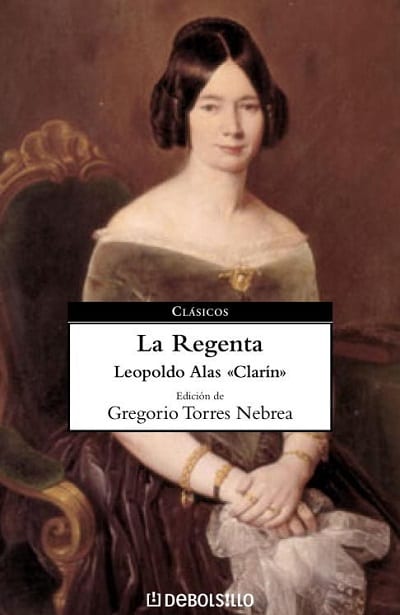
Leopoldo Alas «Clarín» was born in Zamora in 1852 and died in Oviedo in 1901. He was a man of open spirit, liberal, anticlerical and republican. He lived for a few years in Madrid, specifically between 1871 and 1882; there he would come into contact with the "Krausist" environment. Since 1883, he worked at the University of Oviedo, where he was Professor of Law.
In addition to writing novels, Clarín wrote newspaper articles, stories, ... He wrote one of the most remarkable works in Spain: "The Regent". In it, the process of moral degeneration of Ana Ozores is narrated in the closed environment of Vetusta, a provincial city that represents Oviedo.
The narrator

The narrator of "The Regent" he behaves like a being superior to his creatures, whom he knows better than themselves. He has an omniscient character and, although his voice is heard directly, he avoids identifying with the characters. In this way, it manifests itself neutral in its ideology, sometimes achieved from perspectivism, which consists of using the opinions of others to present a character before it is introduced into the novel. In this way, he is portrayed from various points of view.
Structure of the novel
- Su internal structure it's divided in Two parts. The first of them (it goes from chapter I to XV), takes place in three days and essentially deals with the presentation of the characters and the environment. Through the internal monologues of the characters, the author recovers his past for the reader (childhood, adolescence of Ana, aspirations and childhood of Don Fermín, etc.). On the other hand, the second part (from chapter XVI to XXX) focuses on the development of the conflict mentioned in the first part: Vetusta's relations with Ana, those of Don Fermín with Vetusta and those of Ana and the Magistral. It is characterized by action, and temporarily spans from the following November to October three years later.
- The novel begins with a tension in its protagonist, who is torn between the influence that the city exerts on her (represented by Don Álvaro) and that assumed by the presence of the Magistral. Later, Ana reacts against the absorption of this and leans towards Álvaro Mesía, which means the fall of the protagonist in the sin of adultery and its consequent social misfortune.
- Its structure is circular, since it is solidly built and takes up elements from the beginning in its outcome: beginning and end are located in October and in the cathedral.
Characters and conflicts

The play has more than 100 characters, with a rich and perfectly cohesive world. Among all, the following stand out:
- Ana Ozores, the protagonist, the Regenta. Young wife of the retired Regent of the Audience, Don Víctor Quintanar, whom he does not love. She is a woman of tormented character, misfit and dissatisfied with her life. Despite this, she is a character admired and envied by other women due to her beauty and faultless morals.
- Don Fermin de Pas, the magisterial canon, Ana's confessor. He is an ambitious man who claims to have in his hands the power to manage the entire city, especially Ana Ozores, the Regenta. Don Fermín acts in a bad way, since he thinks that Ana belongs to him and even behaves like a husband at times, falling in love with her.
- Don Alvaro Mesia, is the character that the Regenta falls in love with. He is a simple conqueror, a despicable and vulgar being. Don Álvaro cannot offer her the life she pursues: he is one more member of Vetusta and represents the hypocritical and non-aspirational society that pushes and drags the protagonist.
Most representative ideological aspects
This work has been understood as the representation of the author's romantic disappointment, which expresses it through its protagonists. In it, disappointment in the world and the failure of love as spiritual salvation are expressed. You face what you want to have and what you have. Likewise, the novel constitutes a criticism of the falsehood present in society, on which the author unloads his irony: virtue is praised and instead the sin of others is desired, the characters make an effort to pretend what they are not, etc. In this way, La Regenta is both a satire and a drama: on the one hand we have the comedy of Vetusta, which is seen from the surface, and on the other there is the tragedy of Ana Ozores, which is analyzed in depth.

That young people used to die in the past, it is Leopoldo who did not even reach fifty, another intellectual whom I admire a lot, Jaime Balmes the same, thank goodness they left a fruitful creation to the delight of those of us who were not born with such talent, but thankfully? Imagine these geniuses would have had the current hope, how many more jewels would they have left us? ...
You saved me